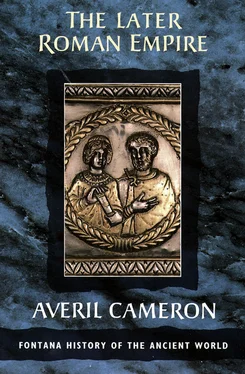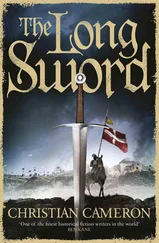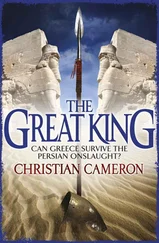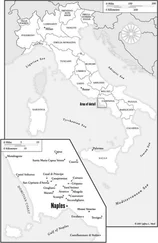The Senate’s undoubted eclipse in the third century is partly attributable to the fact that emperors no longer resided or were made at Rome; the close tie between emperor and Senate was therefore broken, and few third-century emperors had their accessions ratified by the Senate according to traditional practice. Meanwhile the Senate itself lost much of its political role, though membership continued to bestow prestige and valuable fiscal exemptions. Rather than owing their elevation to the Senate, therefore, emperors in this period were often raised to the purple on the field, surrounded by their troops. The legacy of this dispersal of imperial authority can still be seen under Diocletian and the tetrarchy, when instead of holding court at Rome the Augusti spent their time travelling and residing at a series of different centres such as Serdica and Nicomedia, some of which, in particular Trier and Antioch, had already acquired semi-official status in the third century. Rome was never to become a main imperial residence again. Moreover, Rome and the Senate had always gone together. But Constantine now put the senatorial order on a new footing by opening it more widely, so that membership became empire-wide rather than implying a residence and a function based on Rome itself.
In fact, the mid-third century did not see a dramatic crisis so much as a steady continuation of processes already begun, which in turn led to the measures later taken by Diocletian and Constantine that are usually identified with the establishment of the late Roman system. How therefore should the evidence of monetary collapse be assessed in this context? This is one of the most difficult questions in trying to understand what was actually happening. We need to ask how far rising prices were due to a general economic crisis and how much they were the result of a monetary collapse caused by quite specific reasons. One phenomenon often cited in support of the former argument is the virtual cessation of urban public building during this period. The local notables who had been so eager to adorn their cities with splendid buildings during the heyday of Roman prosperity in the second century no longer seemed to have the funds or the inclination to continue. The kind of civic patronage often known as ‘euergetism’ from the Greek word for ‘benefactor’, that had been so prominent a feature of the early empire, now came to a virtual halt. From the fourth century onwards the economic difficulties of the town councils become a major theme in the sources. But a drop in the fortunes of the upper classes is only one possible explanation for the cessation of building; it is clear that the upkeep of existing public buildings, which fell on the city councils, was already a problem by the late second century. Further additions to the stock might be an embarrassment rather than a cause for gratitude. By the mid-third century the uncertainty of the times in many areas also made the thought of building, as of benefactions in the old style, seem inappropriate; in cities which felt themselves vulnerable to invasion or civil war, the first interest of town councils was simply in survival or indeed repair. Some cities showed considerable resilience even after severe attack. Antioch and Athens were badly damaged by the Sasanians and the Heruli respectively, yet both were able to recover. By contrast, the cities in Gaul which suffered during the third-century invasions were more vulnerable than those in the more prosperous and densely populated east, and when rebuilding and fortification took place their urban space typically contracted, as at Amiens and Paris. While in the early empire cities had not needed strong defences, they now started to acquire city walls, and to change their appearance into the walled city typical of late antiquity. At Athens itself the area north of the Acropolis was now fortified. But in North Africa the situation was different again. There, the third century saw continued building and urban growth. Protected to some extent from the insecurity elsewhere, the North African economy profited from increased olive production, and the cities of North Africa in the fourth century were among the most secure and prosperous in the empire.
It is evident that given the rapid turnover of emperors, smooth functioning of relations between centre and periphery must have been seriously disrupted. The empire had been a balancing act from the beginning, and the equilibrium was now endangered. Formerly a balance of imperial and local interest had obtained, and had been at its steadiest during the age of the Antonines. In the third century, local cultures became much more visible. From Gaul to Syria and Egypt, local styles are more evident in visual art, and local interests had an opportunity to make themselves felt, most obviously in the so-called ‘Gallic empire’ and in Zenobia’s bid for independence at Palmyra. Another important development in the third century was the extension of Roman citizenship to all the inhabitants of the empire under the Emperor Caracalla by the so-called Constitutio Antoniana of AD 212; though Caracalla’s motives may have had more to do with getting in more taxes than with idealism or generosity, this measure extended the notion of what was considered ‘Roman’ to cover a multitude of ethnically and locally divergent cultures. Though the balance of power shifted back somewhat towards the centre under Diocletian and the tetrarchy (AD 284–305), the political and military fragmentation during the middle and later third century also had long-term implications for the cultural pattern of late antiquity. From now on, both Syriac and Coptic emerged as major literary languages used by large numbers of Christians in Syria, Mesopotamia and Egypt. The Christian church also profited: despite persecution under Decius (AD 249–51) and Diocletian (AD 303–11), it was able to develop a solid institutional structure which stood it in extremely good stead when it found favour with Constantine.
The third century was certainly a difficult period. Nor were its problems all man-made. The plague which struck the empire in the reign of Marcus Aurelius was much less serious than the attacks of bubonic plague which hit the eastern empire in the sixth century and western Europe in the fourteenth, and indeed, plague and disease were endemic in the ancient world at all periods, but it may nevertheless have been a factor, with the effects of invasion and war, conducive to a reduction in population, and with it (since land needs labour in order to produce wealth) to a diminution in the economic base. The question is highly controversial; though shortage of manpower has been adduced as a reason for the alleged decline of the empire, the case has been argued on poor grounds. Nevertheless, general considerations, together with evidence of urban contraction, especially in the western provinces, do support a cautious hypothesis of a reduction in population. But it is essential to see this over a longer period; the eastern empire at any rate was well able to recover, and there is good evidence of an actual population increase from the late fourth and certainly during the fifth century.
Modern historians, for various reasons, have been quick to emphasize the negative aspects of the period. But it is less obvious that contemporaries saw it in those terms. To our eyes, the social and legal distinctions between honestiores (‘upper class’) and humiliores (‘lower class’) are a striking feature of the later empire; yet they had been developing well before the period of the ‘third-century crisis’. Again, it is probably a modern idea to see the Gallic emperors as forming a separatist regime, for, as Tacitus had remarked, it had long been one of the ‘secrets of empire’ that legitimate emperors could be made outside Rome. Furthermore, the negative views expressed by contemporaries, on which many modern accounts rely, usually have a specific explanation. Bishops such as Cyprian of Carthage, who was himself martyred in the persecution under Valerian in AD 258, very naturally emphasized the evils of the age. On the other hand, cultural activity flourished. The philosopher Plotinus continued to lecture on Platonism in Rome and to attract fashionable crowds to hear him, besides pupils from far afield. P. Herennius Dexippus, who had led the citizens of Athens in their resistance to the Heruli, wrote a history of the Gothic and Scythian invasions, which unfortunately only survives in fragments. We tend to be misled in judging the period by the fact that no good contemporary narrative survives for the critical middle fifty years of the third century, so that we must depend on the often fanciful and trivializing Historia Augusta , which reads rather like a gossip column in a tabloid newspaper, and once read, is hard to forget.
Читать дальше












